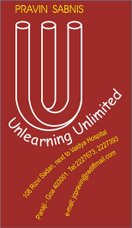In the parable of the "Useless Tree" Hui Tzu said to philosopher, Chuang Tzu: ‘The trunk, of the tree in my garden, is so bent and knotty that nobody can get a good straight plank out of it.The branches are so crooked you can't cut them up in any way that makes sense. No carpenter will even look at it. Such is your teaching, Chuang - big and useless.’
Chuang Tzu replied: ‘No use? Then plant it in the wasteland. Walk idly around it and rest under its shadow. No axe or saw prepares its end. No one will ever cut it down. Useless?’
The large, gnarled tree stood unharmed because its twisted trunk and branches make it unsuitable for lumber. The tree's "uselessness" allows it to live a long and peaceful life.
The story highlights themes of non-action, embracing one's natural purpose, rather than forcing oneself to fit societal expectations. Sometimes, being "useless" can be beneficial, allowing one to avoid unnecessary stress, expectations, or exploitation.
This parable encourages us to rethink traditional notions of value and purpose, embracing the idea that being different or unconventional can be a strength.
Deemed useless was a tree, twisted with its fate to engage,
It stood free in wild harmony, its uniqueness its own stage.
~ Pravin K Sabnis




No comments:
Post a Comment